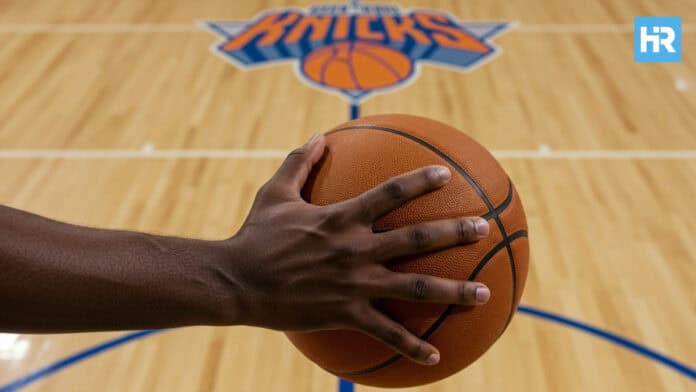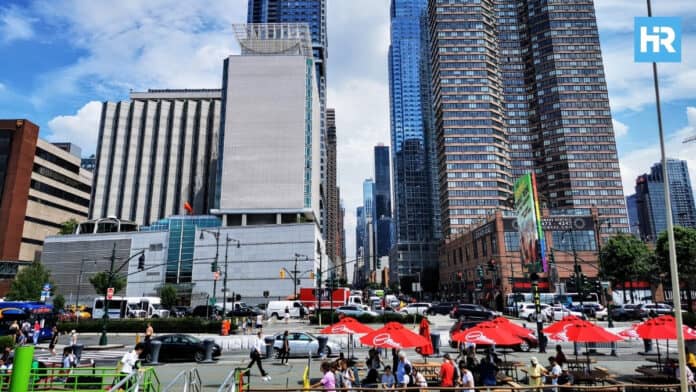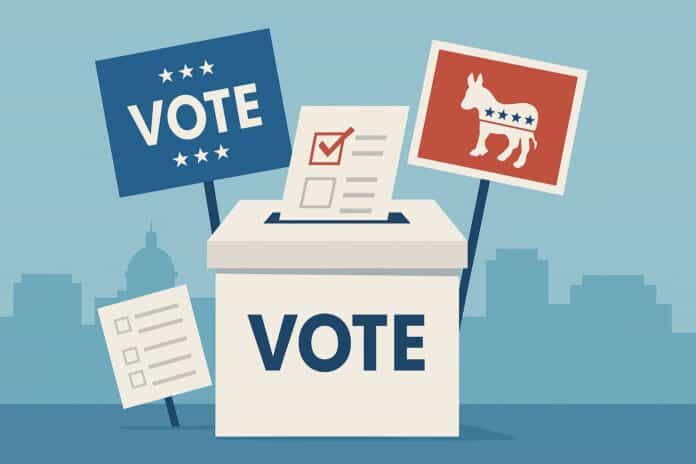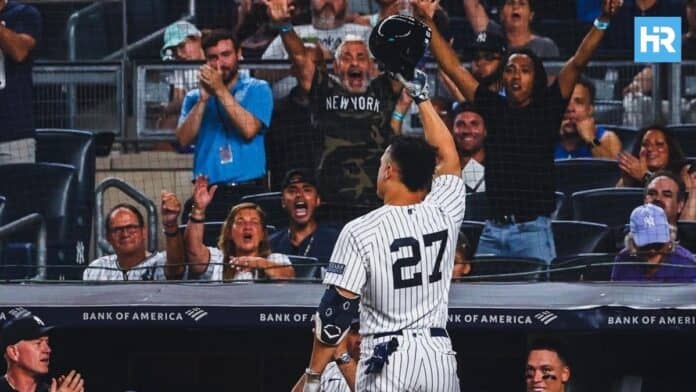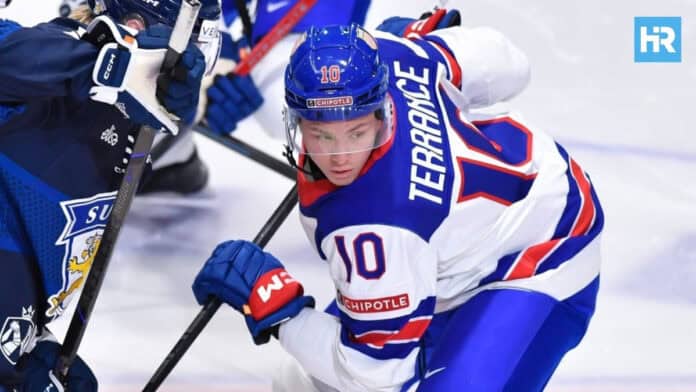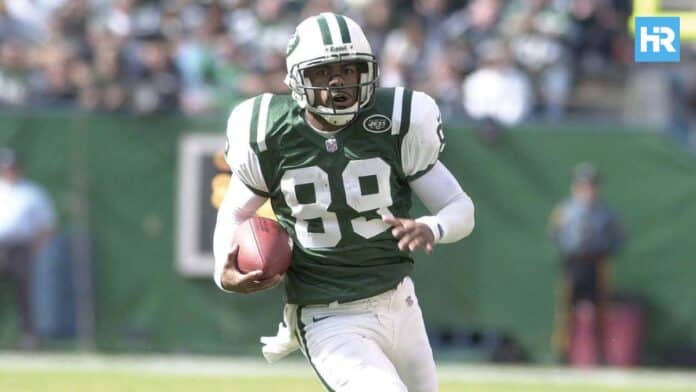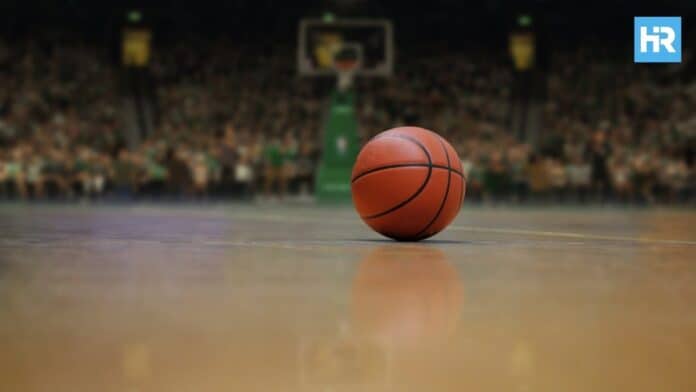Sports betting can be both exciting and overwhelming, especially for beginners trying to navigate the complexity of odds. But once you understand how they work, everything starts to click.
Simply put, odds tell you two things: the likelihood of an outcome and how much you stand to win. They also guide bettors in assessing risk against reward — and help bookmakers lock in a profit.
In this guide, we’ll cover everything you need to know about odds, including how bookies set them and summarize the most popular formats you’ll come across. You’ll also learn smart tips around value betting, variance, and bankroll management, along with common mistakes beginners should avoid.
Let’s break it all down — and help you bet smarter right from the start!
What Do Odds Mean in Betting?
In betting, odds represent the probability of a particular outcome and determine how much money you can win if your bet is successful. They’re the language of betting, helping you gauge both the likelihood of an event happening and the potential reward for taking that risk.
Purpose of Odds
Odds serve multiple purposes, one of which is to incentivize bets. Simply put, odds attract bettors by offering appealing payouts.
Another purpose odds serve is to balance the books. Bookmakers want to ensure they profit regardless of the bet’s outcome, so they use odds to balance the amount of money bet on each side.
Lastly, odds represent the balance of risk and reward. Higher odds mean a less likely outcome but a higher reward. Lower odds mean a more likely outcome but a lower reward.
How Bookmakers Set Sports Betting Odds
When setting odds, Bookmakers consider several factors. One is statistical models and historical data, in which they use data to estimate the probability of an outcome. Bookmakers utilize market trends and expert analysis, factoring in opinions, current form, injuries, weather conditions, and other relevant factors to inform their decisions.
Margin is another factor, as Bookmakers include a profit margin to ensure they make money. This is why implied probabilities from odds usually add up to more than 100%.
Furthermore, Bookmakers adjust odds based on market behavior, as odds change according to how people bet. If large amounts of money come in on one outcome, the odds will shift to balance the risk.
Main Types of Odds Formats
When it comes to betting, there are three main types of odds to understand: Decimal, Fractional, and Moneyline. They all represent the same thing, probability and potential payout, but in different formats.
Decimal Odds
Decimal odds represent the total payout for every unit bet. This format is common in many global markets, especially in Europe, Australia, and Canada.
Here’s a simple way to understand this format: The higher the decimal number, the less likely the outcome. The reward, though, is greater.
To calculate key figures, stick to these formulas:
- Payout = Stake × Decimal odds
- Implied Probability = 1 ÷ Decimal odds
As an example, the current odds of winning the 2025 AL East Division are:
| Team |
Decimal Odds |
| New York Yankees |
1.11 |
| Boston Red Sox |
12.00 |
| Tampa Bay Rays |
15.00 |
| Toronto Blue Jays |
15.00 |
| Baltimore Orioles |
81.00 |
Using $10 as our stake, the payout for each team is:
| Team |
Decimal Odds |
Payout Formula |
Total Payout |
| New York Yankees |
1.11 |
$10 x 1.11 |
$11.10 |
| Boston Red Sox |
12.00 |
$10 x 12.00 |
$120.00 |
| Tampa Bay Rays |
15.00 |
$10 x 15.00 |
$150.00 |
| Toronto Blue Jays |
15.00 |
$10 x 15.00 |
$150.00 |
| Baltimore Orioles |
81.00 |
$10 x 81.00 |
$810.00 |
The implied probability of each team is:
| Team |
Decimal Odds |
Formula |
Implied Probability |
| New York Yankees |
1.11 |
1 / 1.11 |
90.09% |
| Boston Red Sox |
12.00 |
1 / 12.00 |
8.33% |
| Tampa Bay Rays |
15.00 |
1 / 15.00 |
6.67% |
| Toronto Blue Jays |
15.00 |
1 / 15.00 |
6.67% |
| Baltimore Orioles |
81.00 |
1 / 81.00 |
1.23% |
As you can see, the New York Yankees are currently the favorite to win the 2025 AL East Division, with an implied probability of 90.09%. Due to the New York Yankees being such a heavy favorite, with odds at 1.11 on a $10 wager, your payout is only $11.10. That’s a profit of $1.10.
By contrast, the Baltimore Orioles are the biggest underdog to win the 2025 AL East Division, with an implied probability of 1.23%. Due to the less likely outcome of the Baltimore Orioles winning the division, the reward is far greater, as a $10 wager yields a potential payout of $810.00. That’s $800.00 in profit.
Fractional Odds
Traditional in the UK and Ireland and a staple in horse racing, fractional odds are expressed as a ratio of two numbers. These odds show your potential profit relative to your stake.
To calculate key figures, you can use the following formulas:
- Payout = Stake + (Stake × Numerator ÷ Denominator)
- Implied Probability = (Denominator ÷ [Numerator + Denominator]) × 100
For instance, let’s posit that the odds for a horse race are as follows:
| Horse |
Fractional Odds |
| Sugar |
4/7 |
| Sky |
15/4 |
| Happy |
25/4 |
| Blue |
10/1 |
| Chip |
14/1 |
Using $10 as our stake, the payout for each horse is:
| Horse |
Fractional Odds |
Payout Formula |
Total Payout |
| Sugar |
4/7 |
10 + (10 x 4/7) = 10 + 5.71 |
$15.71 |
| Sky |
15/4 |
10 + (10 x 15/4) = 10 + 37.50 |
$47.50 |
| Happy |
25/4 |
10 + (10 x 25/4) = 10 + 62.50 |
$72.50 |
| Blue |
10/1 |
10 + (10 x 10/1) = 10 + 100 |
$110.00 |
| Chip |
14/1 |
10 + (10 x 14/1) = 10 + 140 |
$150.00 |
The implied probability of each horse is:
| Horse |
Fractional Odds |
Formula |
Implied Probability |
| Sugar |
4/7 |
(7/ 4+7) x 100 = 0.6363 x 100 |
63.63% |
| Sky |
15/4 |
(4/ 15+4) x 100 = 0.2105 x 100 |
21.05% |
| Happy |
25/4 |
(4/ 25+4) x 100 = 0.1379 x 100 |
13.79% |
| Blue |
10/1 |
(1/ 10+1) x 100 = 0.0909 x 100 |
9.09% |
| Chip |
14/1 |
(1/ 14+1) x 100 = 0.0666 x 100 |
6.66% |
As you can see, Sugar is the favorite to win the race, with an implied probability of 63.63%. Due to Sugar being a favorite, with odds at 4/7, on a $10 wager, your payout is only $15.71. That’s a profit of $5.71.
By contrast, Chip is the biggest underdog to win the race, with an implied probability of 6.66%. Due to the less likely outcome of Chip winning the race, the reward is far greater, as a $10 wager yields a payout of $150.00. That’s a $140.00 profit.
Moneyline Odds
Common in the United States, moneyline odds are displayed as either a positive or negative number. Positive odds indicate your potential profit and are most commonly associated with underdogs. Negative odds show how much you must bet to make a profit and are mainly associated with favorites.
For example, odds set at -150 mean that you would need to bet $150 to earn a $100 profit. If the odds are +150, on a $100 bet, you would earn $150 plus your $100 stake back.
Positive Moneyline Odds (e.g., +200):
- Payout formula: Payout = Stake × (Odds / 100) + Stake
Example: +200 → $10 × (200 / 100) + $10 = $30
- Implied probability formula: Implied Probability = 100 / (Odds + 100)
Example: +200 → 100 / (200 + 100) = 33.33%
Negative Moneyline Odds (e.g., -150):
- Payout formula: Payout = Stake × (100 / |Odds|) + Stake
Example: -150 → $10 × (100 / 150) + $10 = $16.67
- Implied probability formula: Implied Probability = |Odds| / (|Odds| + 100)
Example: -150 → 150 / (150 + 100) = 60%
As an example, the current odds of winning the NFC East Division are as follows:
| Team |
Moneyline Odds |
| Philadelphia Eagles |
-165 |
| Washington Commanders |
+240 |
| Dallas Cowboys |
+600 |
| New York Giants |
+2200 |
Using $10 as our stake, the payout for each team is:
| Team |
Moneyline Odds |
Payout Formula |
Total Payout |
| Philadelphia Eagles |
-165 |
$10 × (100/165) + $10 |
$16.06 |
| Washington Commanders |
+240 |
$10 × (240/100) + $10 |
$34.00 |
| Dallas Cowboys |
+600 |
$10 × (600/100) + $10 |
$70.00 |
| New York Giants |
+2200 |
$10 × (2200/100) + $10 |
$230.00 |
The implied probability of each team is:
| Team |
Moneyline Odds |
Formula |
Implied Probability |
| Philadelphia Eagles |
-165 |
165 / (165+100) = 165 / 265 |
62.26% |
| Washington Commanders |
+240 |
100 / (240+100) = 100 / 340 |
29.41% |
| Dallas Cowboys |
+600 |
100 / (600+100) = 100 / 700 |
14.29% |
| New York Giants |
+2200 |
100 / (2200+100) = 100 / 2300 |
4.35% |
As you can see, the Philadelphia Eagles are currently the favorite to win the 2025 NFC East Division, with an implied probability of 62.26%. Due to the Philadelphia Eagles being a favorite, with odds at -165, on a $10 wager, your payout is only $16.06. That’s a profit of $6.06.
By contrast, the New York Giants are the biggest underdog to win the 2025 NFC East Division, with an implied probability of 4.35%. Due to the less likely outcome of the New York Giants winning the division, the reward is far greater, as a $10 wager yields a payout of $230.00. That’s a $220.00 profit.
Converting Betting Odds: One Outcome, Three Formats
Comprehending betting odds across various formats is crucial for comparing bets and making informed decisions. Although decimal, fractional, and moneyline odds may look different, they all represent the same underlying probability and potential payout.
Whether you’re dealing with an even match or a big underdog, the odds format changes, but the underlying math remains consistent. Learning to recognize these equivalencies helps bettors translate information across different platforms and better evaluate risk and reward.
Below is an example.
| Outcome Type |
Decimal Odds |
Fractional Odds |
Moneyline Odds |
Implied Probability |
$10 Stake Returns |
| Heavy Favorite |
1.10 |
1/10 |
-1000 |
90.9% |
$11 |
| Favorite |
1.40 |
2/5 |
-250 |
71.4% |
$14 |
| Even Match |
2.00 |
1/1 |
+100 |
50% |
$20 |
| Mild Underdog |
3.75 |
11/4 |
+275 |
26.7% |
$37.5 |
| Big Underdog |
6.00 |
5/1 |
+500 |
16.7% |
$60 |
How to Read Odds
Reading odds is about understanding both the implied probability of an outcome and the potential payout of your bet. It is beneficial because it allows you to evaluate risk versus reward and compare betting opportunities accurately.
Favorites vs. Underdogs
In sports betting, odds are often presented in terms of a favorite and an underdog. The favorite is the team or player expected to win, reflected by lower odds. This means you have to risk more to win less, as the outcome is more likely to occur.
The underdog is the team or player that is less favored, indicated by higher odds. Due to the underdog being less likely to win, the potential payout is higher.
Here’s an example: A favorite is represented as 1.50 in decimal odds, 1/2 in fractional odds, and -200 in moneyline odds. An underdog is expressed as 3.00 in decimal odds, 2/1 in fractional odds, and +200 in moneyline odds.
Even Money Bets
An even money bet is a wager where the potential profit equals your stake: a 1:1 return. These bets are considered balanced, with neither side having a clear edge.
Even money odds are common in bets like coin tosses, player matchups, or point spread wagers, where the bookmaker adjusts the line to make both sides equally attractive.
Odds for even money bets are typically displayed as 2.00 in decimal, 1/1 in fractional, and +100 in moneyline format. These odds are simple for beginners, as whatever you bet is exactly what you can win (Bet $10, Win $10).
Margin/Vig
The margin, also called the vig, is the bookmaker’s built-in profit. Bookmakers don’t just offer fair odds; they slightly shade the lines to ensure they make a profit regardless of the outcome.
For example, using decimal odds, a bookmaker might offer 1.91 odds on each side of a 50/50 event instead of 2.00 odds on both sides. That extra slice, often by a few percentage points above 100% when adding the implied probabilities, is the margin.
Point Spread Betting
Point spread betting is a popular way to bet where sportsbooks even the playing field in matchups where one team is stronger.
Rather than picking a winner, you bet on whether a team will “cover the spread.” That means a team has to win by a certain number of points or stay within a margin if they are the underdog.
For example, the favorite to win, Team A, has a spread of -6.5. To cover the spread, Team A must win by seven or more points. On the other hand, Team B has a +6.5 spread, meaning they can lose by up to six points or win outright for the bet to win.
Point spread bets typically have odds of around -110 on both sides, and the spread is designed to balance the betting action while reflecting the relative strength of the teams.
Practical Examples of Using Betting Odds
Understanding betting odds isn’t just about reading numbers; it’s about knowing how they apply in real situations. And with US sports betting revenue hitting record highs, more people are jumping in, making it even more important to know what you’re doing.
From simple head-to-head matchups to more complex options like parlays and live betting, learning to interpret odds in a single event, how combining bets affects potential payouts, and how odds shift in real-time during live games can make you a more informed and strategic bettor.
Simple Event with Straightforward Odds
Imagine a tennis match between Player A and Player B. Using moneyline odds, Player A is a -160 favorite, while Player B, the underdog, is priced at +140.
If you bet $100 on Player A and they win, your total return is $162.50. Those winnings include your $100 stake and a $62.50 profit. The lower odds indicate a higher probability of winning but offer a smaller payout.
Conversely, if you bet on Player B, staking $100, your total return would be $240. That includes your $100 stake and $140 in profit. The higher odds indicate a lower probability of winning but offer a higher payout.
How Odds Change in Parlays
Parlays involve combining multiple bets into one ticket, with the odds of each leg of the bet multiplying to determine the total payout.
For example, using decimal odds, if you bet on Player A to win at 1.90 odds and also bet on a hockey team to win at 1.60 odds, the combined parlay odds are 1.90 x 1.60 = 3.04. A $100 stake on this parlay will return $304 if both legs win, with $204 being profit.
However, if even one part of the bet loses, the entire parlay fails. This format is attractive due to its potential for high returns, but it comes with increased risk, as every selection must be correct to win the bet.
Live Betting and In-Play Odds
Live betting allows you to place bets while a game or event progresses. Odds in live betting change in real-time based on what’s happening, reflecting player performance, injuries, scoreline shifts, momentum swings, etc.
Using moneyline odds, imagine a baseball game between Team A and Team B. Before the first pitch, the pre-match odds favor Team A, with odds of -180. Team B, the underdog, is set at +160 odds.
The game starts, and Team B scores the first two runs of the game in the first inning. The odds will shift to reflect Team A’s reduced chance of winning and Team B’s increased chance of winning, with Team A now being the underdog at +110 and Team B the favorite at -120.
This dynamic system allows bettors to respond to live developments and identify value in fluctuating odds. However, acting quickly is crucial, as odds can update within seconds and sometimes be suspended during critical moments.
Understanding Risk and Value in Betting Odds
Every wager in sports betting carries a level of risk, and the key to long-term success is evaluating whether the potential reward justifies the risk. Placing bets on favorites because they are implied as “more likely to win” can be a losing strategy if the odds don’t offer a fair return.
Understanding value means looking beyond who is most likely to win and focusing on whether the odds offered represent a profitable opportunity over time.
Value Betting as a Concept
Value betting is when you identify a bet where the actual probability of an outcome is higher than what the odds suggest.
Using fractional odds, let’s say a bookie gives you odds of 9/1(implying a 10% chance) on a horse you believe has a 20% chance of winning. That’s a value bet.
Even though you won’t win every time, if you consistently place bets where the odds underestimate the actual likelihood, you’ll profit in the long run. Value betting is a strategy employed by professional bettors to outperform the market, and it is one of the most crucial concepts for sustainable betting.
Variance and Bankroll Management
No matter how effective your strategy is, betting involves variance, which is the natural fluctuation of luck. You might make all the right decisions and still go through losing streaks.
That’s why bankroll management is essential. This means only risking a small, consistent percentage of your total betting funds on each wager.
Managing your bankroll protects you from losing it all during cold streaks and ensures you’re still in the game when the odds swing back in your favor. It’s also a core part of responsible gambling, as betting emotionally or chasing losses is one of the quickest ways to lose control of your funds.
Common Mistakes When Understanding Betting Odds
Many beginners misinterpret odds as predictions rather than pricing. One common mistake is assuming that a favorite is guaranteed to win simply because the odds are low. Conversely, thinking that long odds automatically offer excellent value.
Others overlook how bookmaker margins skew implied probabilities or ignore the difference between true and offered odds. Another frequent error is mismanaging risk by betting too much of their bankroll or stacking unrealistic parlays.
Understanding that odds reflect both likelihood and value, rather than just one or the other, is key to avoiding these costly pitfalls.
Wrapping Up: Understand the Odds, Bet Smarter
Sports betting combines elements of probability, risk management, and self-control. By learning to read and interpret odds, whether in decimal, fractional, or moneyline formats, you gain a foundational skill that transforms blind guesses into informed decisions.
That’s why we’ve broken down not just how odds are shown, but also what they truly mean in terms of value, probability, and profitability.
Whether you’re betting for fun or aiming to build a serious strategy, remember that success comes not from picking winners but from understanding the odds, managing risk, and thinking critically.
Bet responsibly, and let knowledge be your edge.




